Low-dose naltrexone (LDN) is making waves in the world of chronic pain, autoimmune conditions, and wellness. But is LDN safe? In this guide, we’ll explore the evidence, bust some myths, and give you the facts in plain English. You’ll find out who LDN is for, how it works, what the latest research says about its safety, and why it’s becoming a go-to for patients and prescribers alike.
Table of contents
- Five key takeaways
- Who is this article for, and why should you care?
- What is LDN, and how does it work?
- What does the latest research say about LDN safety?
- Why should we trust this review?
- A summary of the review’s findings
- LDN side effects
- Long-term safety of LDN: What do we know?
- Norway to the rescue
- Is low dose naltrexone safe for everyone?
- What do real-world users say about LDN safety?
- Practical tips for staying safe on low-dose naltrexone
- FAQs: Is LDN safe? (and other common questions)
- The bottom line: Is LDN safe?
- References
Five key takeaways
- LDN has a safety profile similar to placebo in clinical trials, even at higher doses.
- Serious adverse events are rare and not increased compared to dummy tablets.
- Long-term safety data is promising, especially from large national prescription databases.
- LDN is unlicensed for most uses, so always talk to your doctor or pharmacist before starting.
- More research is needed, but current evidence gives prescribers and patients confidence in LDN’s safety.
Who is this article for, and why should you care?
This article is for anyone considering LDN for chronic pain, autoimmune conditions, or wellness—whether you’re a patient, a carer, or a healthcare professional.
If you’re looking for trustworthy, easy-to-understand information about LDN’s safety, you’re in the right place. We’ll answer your questions, share real-world examples, and make sure you leave feeling informed and reassured.
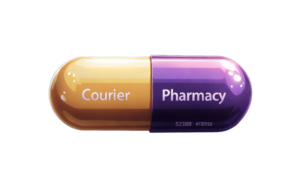
What is LDN, and how does it work?
Low Dose Naltrexone (LDN) is a low-dose form of naltrexone, a medicine initially developed for opioid and alcohol addiction at much higher doses [1].
At low doses (usually 1.5–4.5 mg), LDN is used “off-label” to modulate the immune system, reduce inflammation, and help manage conditions such as fibromyalgia, multiple sclerosis, Crohn’s disease, and others [2].
LDN works by briefly blocking opioid receptors, which encourages your body to make more of its own natural painkillers (endorphins and enkephalins) and may also calm inflammation by acting on immune cells in the brain [2].
If you are interested in learning more about how LDN works, read our blog, “How LDN works”.
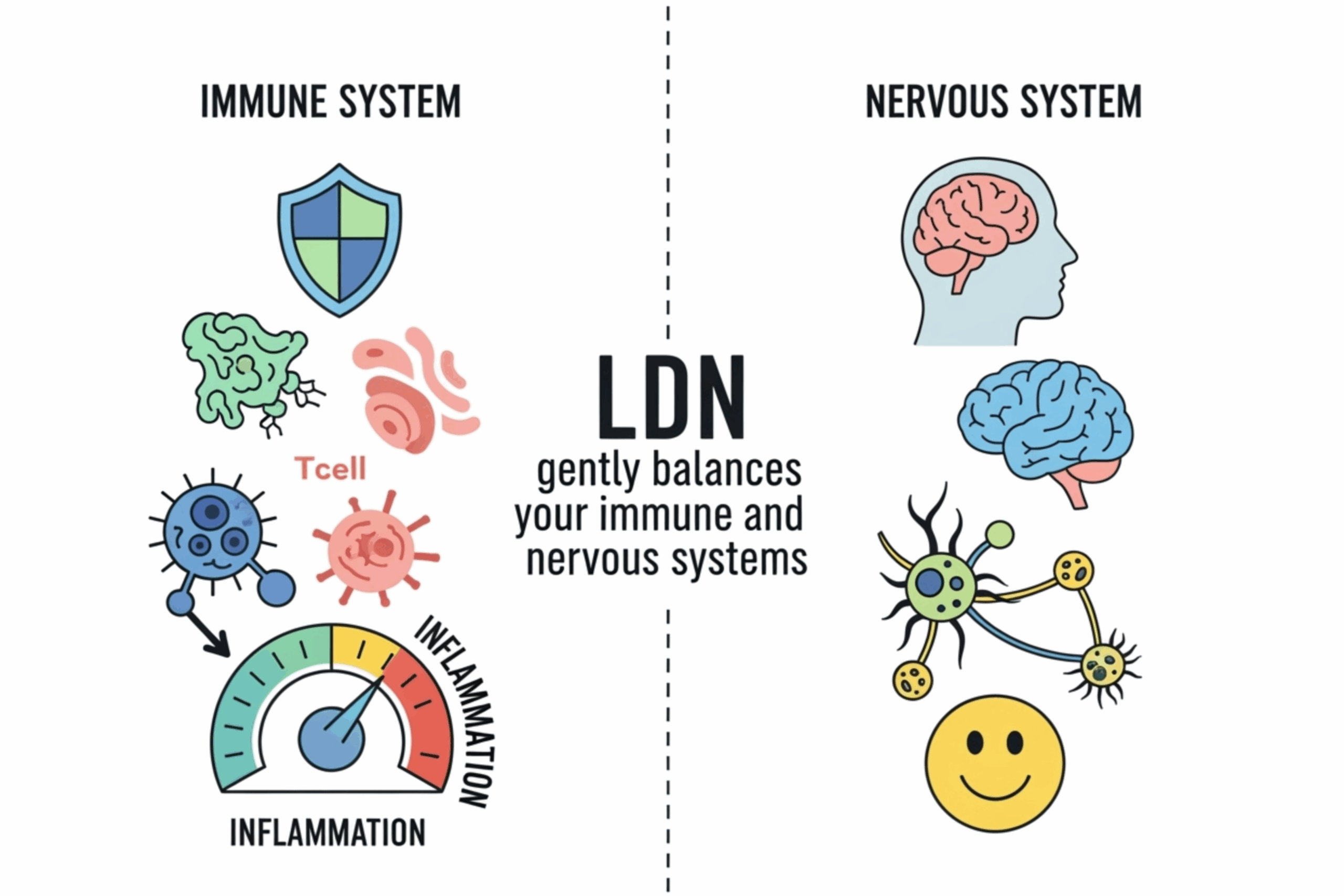
What does the latest research say about LDN safety?
Serious adverse events: What the numbers really show
A large systematic review and meta-analysis (a fancy way of combining lots of clinical trials —89 studies with over 11,000 people) examined serious adverse events—things like death, hospitalisation, or permanent disability [3].
The researchers compared people taking naltrexone (at any dose, from 3mg to 250mg) with those taking a placebo (a dummy tablet). The surprise? The rate of serious adverse events was the same in both groups [3].
That means LDN doesn’t add extra risk, even at much higher doses than most people ever take for chronic conditions. Most of the trials were in people with alcohol problems—where you’d expect more serious events anyway—but the results held across the board [3].
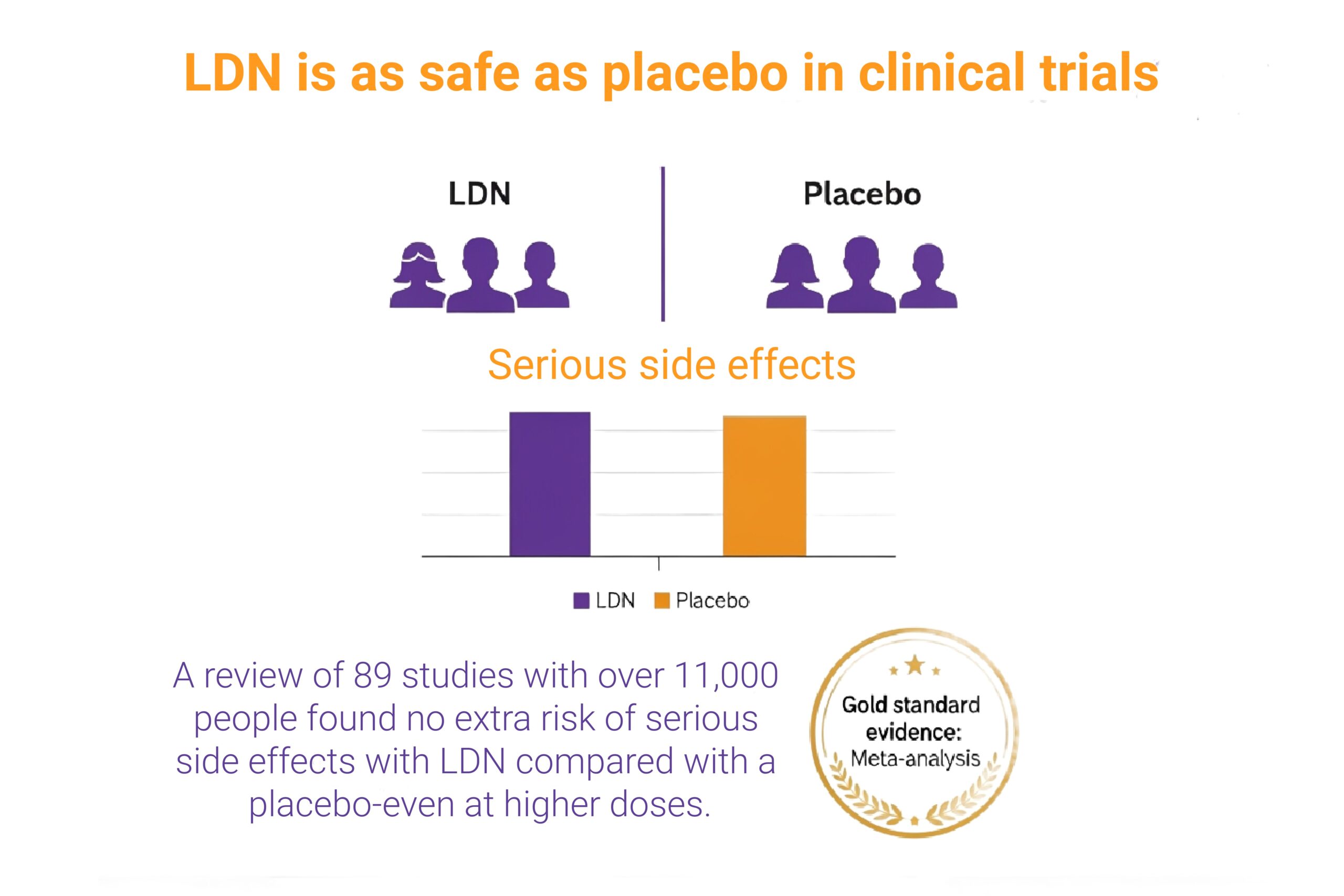
Why should we trust this review?
This systematic review and meta-analysis is especially trustworthy because it combined results from thousands of people with diverse backgrounds and health conditions, making the findings more relevant to everyday life.
By examining studies from multiple countries and including individuals with a range of health issues—not just one specific illness—the results are more likely to be applicable to real patients.

The gold standard in evidence based medicine, the meta-analysis
A meta-analysis is often referred to as the “gold standard” in research because it combines data from numerous separate studies.
This means you’re not just relying on one small group or one doctor’s experience, but on a much bigger pool of evidence. The bigger and more varied the group, the more confident we can be in the results.
Of course, some of the original studies didn’t always record every minor side effect, so that a few mild problems might have been missed.

A summary of the review’s findings
Still, the main takeaway is clear: naltrexone does not raise the risk of serious harm compared to a placebo.
This supports the safe use of naltrexone for its approved indications and suggests it may have potential for further study in other conditions.

LDN side effects
The meta-analysis revealed that some mild side effects—such as dizziness, nausea, or vomiting—may occur more frequently with naltrexone than with a placebo; however, these were not consistently reported in most studies, making it difficult to confirm [3].
However, a more recent review of LDN, carried out in 2025 [4], found that the following side effects were associated with LDN.
The most common ones are:
Most of the time, side effects were mild, and only a small number of people stopped taking the treatment due to them. Usually, these side effects went away on their own after a few days, weeks, or at most, a few months [6].
Most people find them easy to manage, and they don’t seem to stop people from using LDN in the future.
Long-term safety of LDN: What do we know?
Most clinical trials last less than a year, so what about longer-term use? Here’s where real-world data helps.

Norway to the rescue
In Norway, hardly anyone was using LDN until a TV documentary highlighted its potential benefits. After that, more than 15,000 people—over 0.3% of the population—started using LDN within just a few months [7]. This sudden surge in users provided researchers with a unique opportunity to study the effects of LDN on a large group of people nationwide.
In Norway, where about 0.3% of the population has tried LDN, prescription databases show that people with Crohn’s disease who take LDN need fewer conventional treatments over time [8].
This suggests that more people are choosing LDN instead of conventional treatments, and it hints that LDN is safe to use long-term. While we’re still waiting for even more long-term studies, the evidence so far is very encouraging and reassuring.
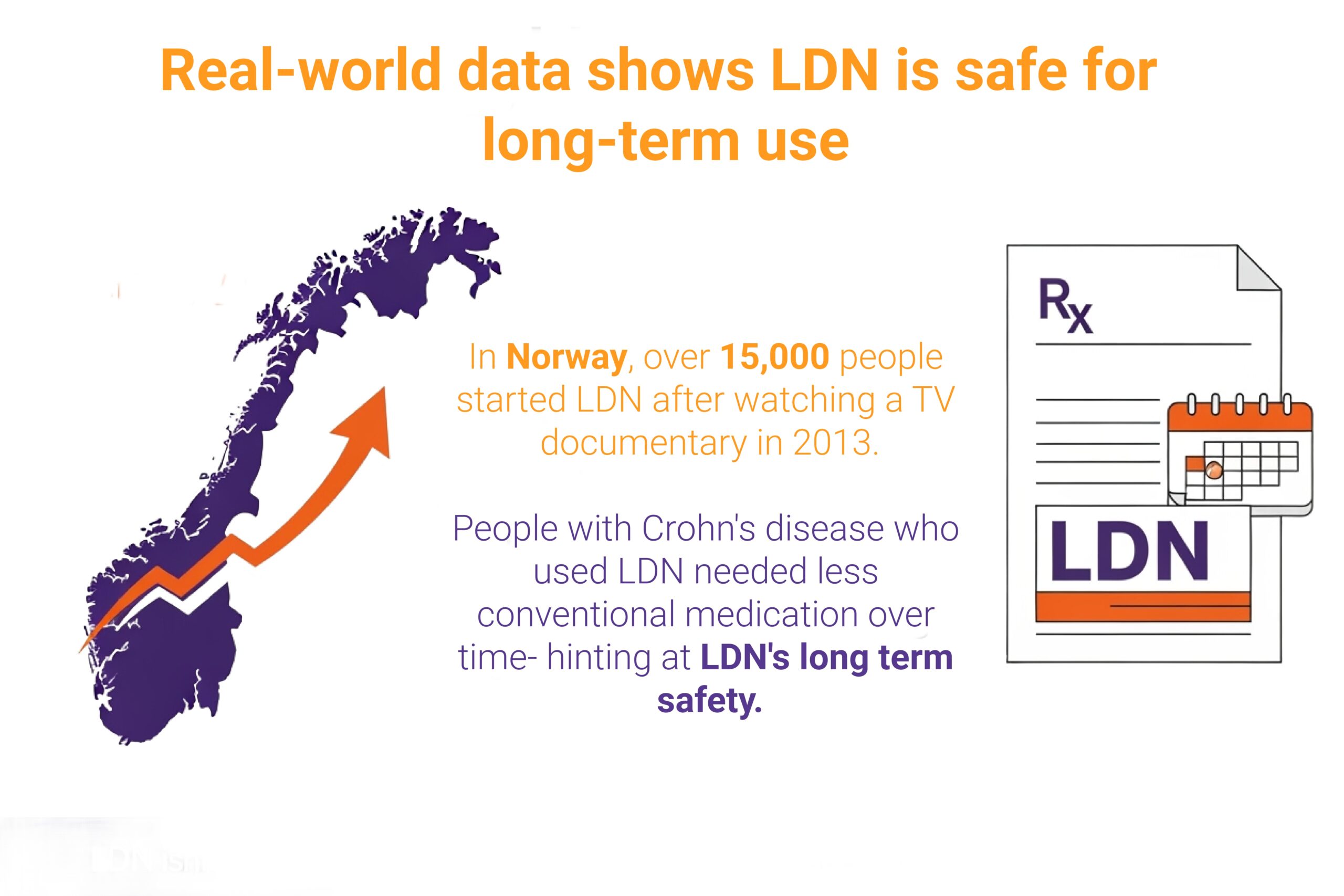
Is low dose naltrexone safe for everyone?
Most studies indicate that naltrexone is generally safe for most individuals, particularly at the standard doses.
The main serious risk is if it’s taken by someone using opioid drugs (like morphine or heroin), as it can quickly cause withdrawal symptoms—so LDN should never be used with opioid painkillers [9].
Another rare but important risk is liver injury, but this has only been seen with very high doses (about 300mg a day), which are much higher than the low doses used for LDN [9].
At standard doses (50–100mg per day), naltrexone is considered safe, and minor side effects, such as mood changes, are usually attributed to the person’s health background, rather than the medicine itself.
For LDN, the most common side effects are vivid dreams and trouble sleeping, especially at first. These usually go away on their own or can be managed by taking LDN in the morning instead of at night. Serious side effects are very rare, but everyone reacts differently. If you feel unwell, please let your doctor know.
People who are taking opioid painkillers, or who have severe liver problems, should not use LDN [9].

What do real-world users say about LDN safety?
At Courier Pharmacy, we’ve supported hundreds of people as they begin their LDN journey. The most common side effect people mention is vivid dreams, but most find that any side effects are mild and go away quickly, if they notice any at all.
In fact, some patients tell us they feel better than they have in years.
Everyone responds differently, so it’s always wise to keep in touch with your healthcare team as you go. This is super easy to do when you purchase LDN from Courier Pharmacy, since all the LDN consultations are FREE.

Practical tips for staying safe on low-dose naltrexone
- Always get your LDN from a GPhC-registered compounding pharmacy (like Courier Pharmacy).
- Start with a low dose and increase slowly, as advised by your prescriber.
- Keep a diary of any side effects or changes in symptoms.
- Stay in touch with your pharmacist or doctor for regular reviews.
- Never take LDN with opioid painkillers.

FAQs: Is LDN safe? (and other common questions)

What are the most common side effects of LDN?
The most common side effect people mention is vivid dreams. Some also notice mild headaches, trouble sleeping, or feeling a bit sick at first. These effects are usually mild and go away on their own.

Can I take LDN if I have liver problems?
LDN is not recommended for people with severe liver disease. If you have any liver issues, always discuss this with your doctor before starting LDN.

Is it safe to drive or use machinery while taking LDN?
Most people find that LDN doesn’t affect their ability to drive or use machines. However, if you feel dizzy or very tired after starting LDN, wait until you feel better before driving.

Do I need regular check-ups while taking LDN?
Yes, it’s a good idea to have regular reviews with your healthcare team, especially when you’re starting LDN or changing the dose. This is easy to do at Courier Pharmacy because all our LDN consultations are FREE.

How do I know if LDN is working for me?
Many people start to notice benefits after a few weeks, but it can take a couple of months to see the full effects. Keeping a symptom diary can help you and your doctor track any changes.

Can I stop LDN suddenly, or do I need to taper off?
LDN is not addictive, so you can usually stop without any problems. Still, it’s best to talk to your prescriber before making any changes.

Is LDN addictive?
No—LDN is not addictive and does not cause withdrawal symptoms.[5]

Where can I get LDN in the UK?
You can obtain LDN through a private prescription from a compounding pharmacy, such as Courier Pharmacy. Simply start the LDN consultation.
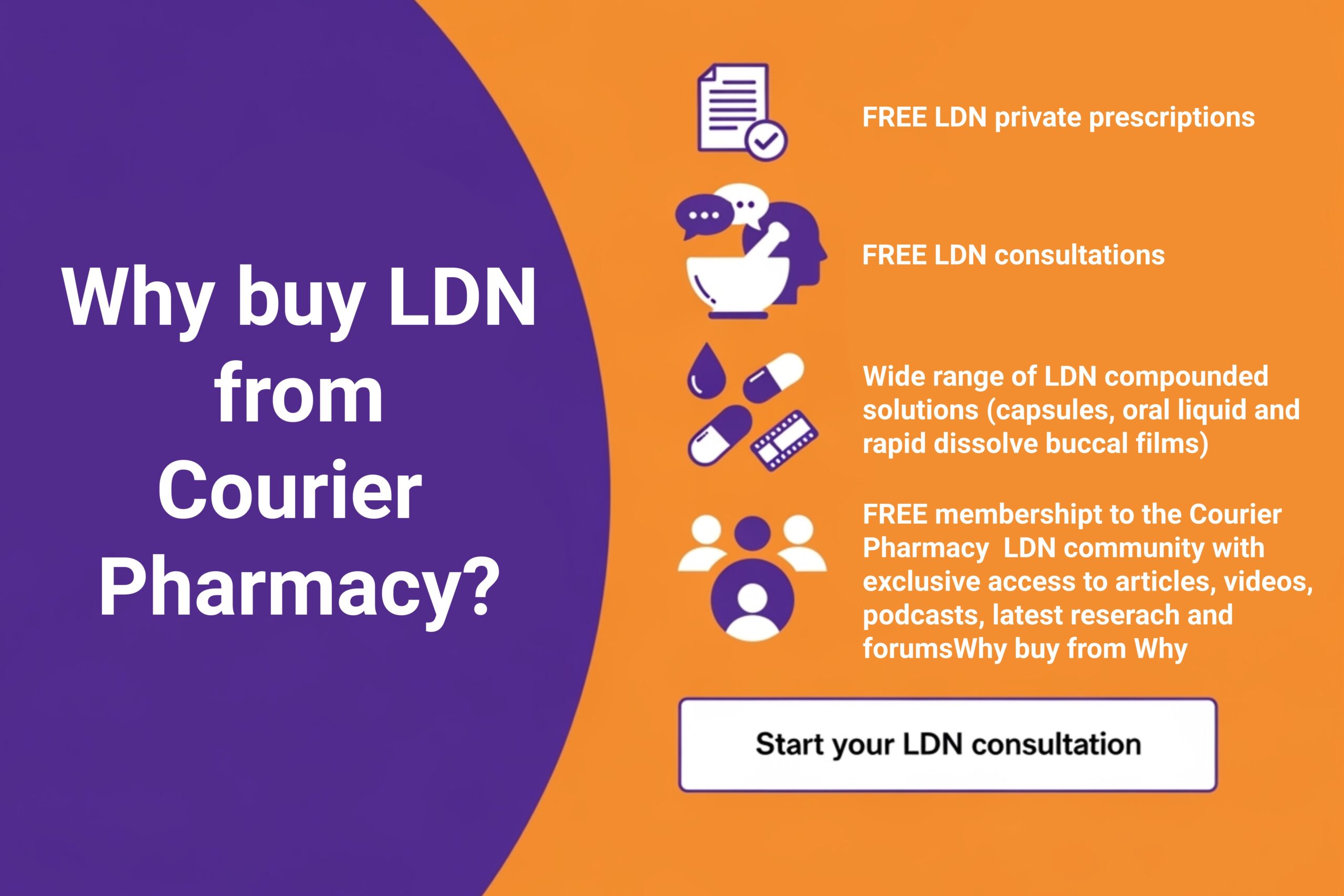
The bottom line: Is LDN safe?
All medicines carry some risk, but the evidence so far indicates that Low-Dose Naltrexone is as safe as a placebo for most people, with very few serious side effects.
Long-term data from Norway, combined with growing real-world experience in the UK, provides further reassurance.
As always, consult your healthcare professional before starting any new treatment, and use LDN only from a trusted, registered pharmacy, such as Courier Pharmacy.
This information is for general guidance only. For medical advice, please consult your doctor or healthcare provider.

References
- Courier Pharmacy (2025) Can LDN help with Long COVID? [Online]. Courier Pharmacy. Available at: https://courierpharmacy.co.uk/can-ldn-help-with-long-covid/ (Accessed: 28 July 2025).
- Courier Pharmacy (2025) How does LDN work? [Online]. Courier Pharmacy. Available at: https://courierpharmacy.co.uk/how-does-ldn-work/ (Accessed: 28 July 2025).
- Bolton, M., Hodkinson, A., Boda, S., Mould, A., Panagioti, M., Rhodes, S., Riste, L. and Van Marwijk, H., 2019. Serious adverse events reported in placebo randomised controlled trials of oral naltrexone: a systematic review and meta-analysis. BMC medicine, 17(1), p.10.
- Leiber, K.K., Parker, R.W. and Parker III, R.W., 2025. Therapeutic Uses and Efficacy of Low-Dose Naltrexone: A Scoping Review. Cureus, 17(3).
- Dieckmann G, Ozmen MC, Cox SM, Engert RC, Hamrah P: Low-dose naltrexone is effective and welltolerated for modulating symptoms in patients with neuropathic corneal pain. Ocul Surf. 2021, 20:33-8.
- Polo O, Pesonen P, Tuominen E: Low-dose naltrexone in the treatment of myalgic encephalomyelitis/chronic fatigue syndrome (ME/CFS). Fatigue Biomed Health Behav. 2019, 7:207-17.
- Raknes, G. and Småbrekke, L., 2017. A sudden and unprecedented increase in low dose naltrexone (LDN) prescribing in Norway. Patient and prescriber characteristics, and dispense patterns. A drug utilization cohort study. pharmacoepidemiology and drug safety, 26(2), pp.136-142.
- Raknes, G., Simonsen, P. and Småbrekke, L., 2018. The effect of low-dose naltrexone on medication in inflammatory bowel disease: a quasi experimental before-and-after prescription database study. Journal of Crohn’s and Colitis, 12(6), pp.677-686.
- Toljan, K. and Vrooman, B., 2018. Low-dose naltrexone (LDN)—review of therapeutic utilization. Medical Sciences, 6(4), p.82.



